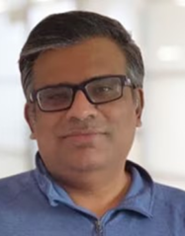Joint PSI/EFSPI Pre-Clinical SIG Webinar: Efficient R&D: SVEM and Advanced DOE in Preclinical Toxicity Testing
Date: Tuesday 8th October 2024
Time: 14:00-15:00 BST | 15:00-16:00 CEST | 09:00-10:00 ET
Location: Online via Zoom
Speakers: Phil Kay (JMP) and Chandramouli Ramnarayanan (JMP).
Who is this event intended for? Statisticians and data scientists working on pre-clinical experiments in the pharmaceutical industry.
What is the benefit of attending? Learning about experimenting with maximum efficiency i.e. the least number of experiments.
Registration
This event is free to attend for both Members of PSI and Non-Members. To register your place, please click here.
Overview
Advances in AI, lab automation and closed-loop optimisation promise big productivity gains for pharma R&D. But experimenting with maximum efficiency - that is, the least number of runs - will always be important. This is especially true where there is an ethical imperative, such as in pre-clinical animal experiments.
Recent advances in statistical Design Of Experiments (DOE) including Definitive Screening Designs (DSDs) and the broader class of Orthogonal Minimally Aliasing Response Surface (OMARS) designs have given us new options for understanding complex systems with small experiments. Self-Validated Ensemble Modelling (SVEM) is an innovative analysis approach that applies ideas from Machine Learning to small data from designed experiments. In this presentation we will show how SVEM works and how it can overcome common challenges when you are building useful models of complex systems from small experiments.
We will illustrate this with a case study example on testing the toxicity of an oncology formulation in a preclinical setting. This (simulated) study examines the impact of various formulation factors and their interactions on the toxicity and efficacy of a new oncology drug cocktail using a rat model. Key factors include the concentrations of Erlotinib, Cisplatin, and Dexamethasone, with responses measured such as tumor inhibition rate, overall survival rate, and toxicity indicators. Additionally, the pH of the formulation and particle size were evaluated. Responses measured include efficacy, represented by tumor inhibition rate, and various toxicity parameters, such as overall survival rate, hepatic toxicity, renal toxicity, cardiac toxicity, and hematological toxicity.
Speaker details
|
Speaker
|
Biography
|
|

Phil Kay
|
Phil leads a global team with a mission to spread the use and impact of data analytics amongst scientists and engineers at some of the world’s largest chemical, pharmaceutical, semiconductor and consumer product companies. Earlier in his career he gained a passion for statistical design and analysis of experiments while working as a development chemist at FujiFilm. Phil has a master’s degree in applied statistics and a master’s and PhD in chemistry. He is a chartered chemist and chair of the RSC process chemistry and technology interest group.
|
|

Chandramouli Ramnarayanan
|
Chandra (Chandramouli Ramnarayanan), PhD, is a member of the Global Technical Enablement team at JMP Statistical Discovery LLC, a SAS Institute subsidiary. He provides technical support to leading health and life sciences clients and contributes to product development. Previously, Chandra held senior roles in quality assurance within the pharmaceutical sector and served as a professor of pharmaceutical quality assurance. With a PhD in Pharmaceutical Sciences, over 30 publications, and certifications in SAS® Programming, PRINCE2 Agile®, and ITIL 4.
|



